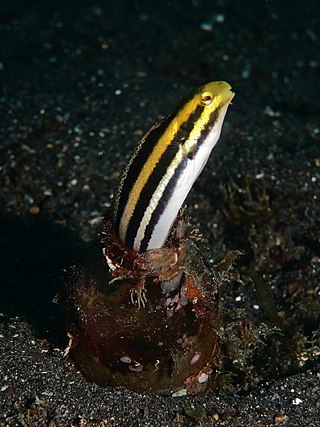
The black redhorse is a species of freshwater fish endemic to Ontario and the eastern half of the United States, where it lives in streams and small to medium rivers.

The golden redhorse is a species of freshwater fish endemic to Ontario and Manitoba in Canada and the Midwestern, southern, and eastern United States. It lives in calm, often silty or sandy waters in streams, small to large rivers, and lakes.

The greater redhorse is a species of freshwater fish found in northeastern North America. It is the largest member of the genus Moxostoma, with a maximum length of 80 cm (31.5 in). The greater redhorse is long lived with a maximum reported age of 27 years.

The river redhorse is a species of freshwater fish endemic to the eastern half of the United States and southeastern Canada. They can range from 10 to 30 inches in length and can potentially reach a weight of more than 10 pounds after maturity. It is typically found in clear, large creeks and rivers, though it is sometimes also found in lakes. They are sometimes speared or caught with hook and line using crayfish or worms as bait.

The shorthead redhorse is a wide-ranging species in North America. The shorthead redhorse is native to central and eastern North America. However, its range has expanded to include areas like the Hudson estuary and Grayson County, Texas. It inhabits small to large rivers and lakes, and lives in the benthic zone. Shorthead redhorse feed on benthic invertebrates and can consume plant material from the benthic environment that it inhabits. When it spawns, shorthead redhorse move into more shallow streams and spawn over gravel or rocky shoals. They will also spawn in springs with swift moving water. The shorthead redhorse is important to humans because it is a game fish. It is also important to anglers because of its role in the ecosystem; it is prey for larger game fish such as northern pike and muskellunge.

The silver redhorse is a species of freshwater fish endemic to Canada and the United States. It is the longest-lived redhorse known, with a maximum reported age of 41 years. Sometimes called redhorse or sucker for short, it is in the family Catostomidae with other suckers. The species is distributed from Quebec to Alberta and is also in the Mississippi River, St. Lawrence River, Ohio River, and the Great Lakes basins. The current world record is 6.75 kilograms, caught by Chris Stephenson on Pickwick Lake in Alabama, April 1995 and certified by National Freshwater Fishing Hall of Fame. This species is of growing interest to rod-and-line anglers. The long-lived and late-maturing silver redhorse is also a sportfish pursued by kill-and-dump bowfishing, a 21st century unregulated sport that produces tons of wanton waste, and thus management and conservation are in need of updating.

Moxostoma, the redhorses or jumprocks, is a genus of North American ray-finned fish in the family Catostomidae. Redhorses are variable in size, geographic location, and other ecological traits such as spawning substrate. Several redhorses are long-lived, much like many other catostomid species. The silver redhorse is the longest-lived redhorse known by nearly a decade, with ages exceeding 40 years. Redhorses are broadly of conservation concern, as these long-lived species are highly intolerant to environmental pollution, habitat fragmentation, and are currently subject to unregulated 21st century sport bowfishing which is removing and wantonly wasting several of these species by the ton.

The harelip sucker was a species of ray-finned fish in the family Catostomidae. It was found only in the United States. It is considered extinct as it has not been seen alive since 1893.
The bigeye jumprock is a species of ray-finned fish in the family Catostomidae. It is found only in the upper Roanoke River drainage in Virginia and North Carolina, United States. It inhabits deep rocky runs and pools with large boulders and rubble. It reaches a maximum length of around 22 cm.

The robust redhorse is a redhorse-type fish that lives in the freshwater streams of the eastern United States. It was previously called the smallfin redhorse.

The Mexican redhorse is a species of ray-finned fish in the genus Moxostoma. It can be found in the waters of the Sierra Madre Occidental mountains and the Rio Grande basin.

Moxostoma cervinum is a species of ray-finned fish in the genus Moxostoma.
The notchlip redhorse is a species of ray-finned fish in the genus Moxostoma.
The greater jumprock is a riverine species of catostomid fish native to Georgia and Alabama in North America.

The V-lip redhorse is a species of freshwater catostomid fish from Eastern North America. It inhabits drainages on the Atlantic Slope between Virginia and South Carolina.

The pealip redhorse is a species of ray-finned fish in the genus Moxostoma.

The blacktail redhorse is a species of ray-finned fish in the genus Moxostoma. The blacktail redhorse occupies North America, being located throughout Mississippi River tributaries on the former Mississippi Embayment, ranging from Southern Kentucky to Galveston Bay in Texas.

Petroscirtes breviceps, the striped poison-fang blenny mimic, striped fangblenny mimic, short-head sabretooth blenny, short-headed blenny, sabretooth blenny, or the black-banded blenny, is a species of combtooth blenny found in coral reefs in the western Pacific and Indian Ocean. This species reaches a length of 11 centimetres (4.3 in) SL.

The striped jumprock is a North American freshwater fish in the genus Moxostoma.

















